
13 Jun, 2016
High-powered Bangladeshi Expo bids to cut travel, trade gap with Thailand
Bangkok – The first Bangladeshi female ambassador in 44 years of diplomatic relations with Thailand has pulled off a hugely successful trade and investment expo designed to help Thai businessmen “take a fresh look” at a rapidly emerging country with huge cost and competitive advantages. Several ministers, chambers of commerce leaders and dozens of businesspersons from both countries attended the Bangladesh Trade and Investment Expo 2016 organised between May 31-June 1 to help narrow a glaring pro-Thailand gap in the bilateral trade and travel balance.
A total of 55 companies from business sectors such as tourism, pharmaceuticals, shipbuilding, jute, textiles, bone china, energy, readymade garments and telecoms joined the event which was backed by the Export Promotion Bureau, Ministry of Commerce of Bangladesh. In addition to a trade exhibition, trade and investment conference, business networking and match making, one key highlight was a Threads of Heritage Fashion Show and Cultural Expose, featuring top Thai and Bangladeshi models.
According to a media release, in 2014, Thai exports to Bangladesh amounted to almost US$900 million, covering products such as cement, clinkers, cereals, plastics, man-made staple fibers, sugar and sugar confectionary, refrigerators, machinery and mechanical appliances, cotton and cotton fabrics, etc. Every year, Thailand organises a Thai Trade Show in Dhaka which is visited by a huge number of visitors.
On the flip side, the value of Bangladesh’s exports to Thailand has stagnated at US$20-50 million over the past decade except for 2012-2013, when it peaked at US$94 million (of which $39 million was from export of jute bags and $23 million from fossil fuel) before dropping to $39.6 million in 2013-2014. In 2014- 2105, Bangladeshi exports to Thailand totalled $32.76 million. They include jute and jute bags, knit and woven garments, shrimps, pharmaceuticals products and products of animal origin.
The same imbalance applies to travel & tourism. Bangladeshi visitors to Thailand have risen steadily over the years to hit 107,394 in 2015, up 21.8% over 2014. Their average length of stay is 7.5 days and average daily expenditure US$159 (2014 data). In return, according to Tourism Authority of Thailand figures, Thais visiting Bangladesh totalled only 8,556 in 2014, up 3.41% over 2013. The average length of stay was 5.3 days and average daily expenditure US$117.5. As of June 2016, there are 25 weekly flights between Dhaka and Bangkok by Thai Airways, Bangladesh Biman, Bangkok Airways and Regent Airways.
The Bangladeshis are hoping that the Trade and Investment Expo will initiate a process to narrow that gap.
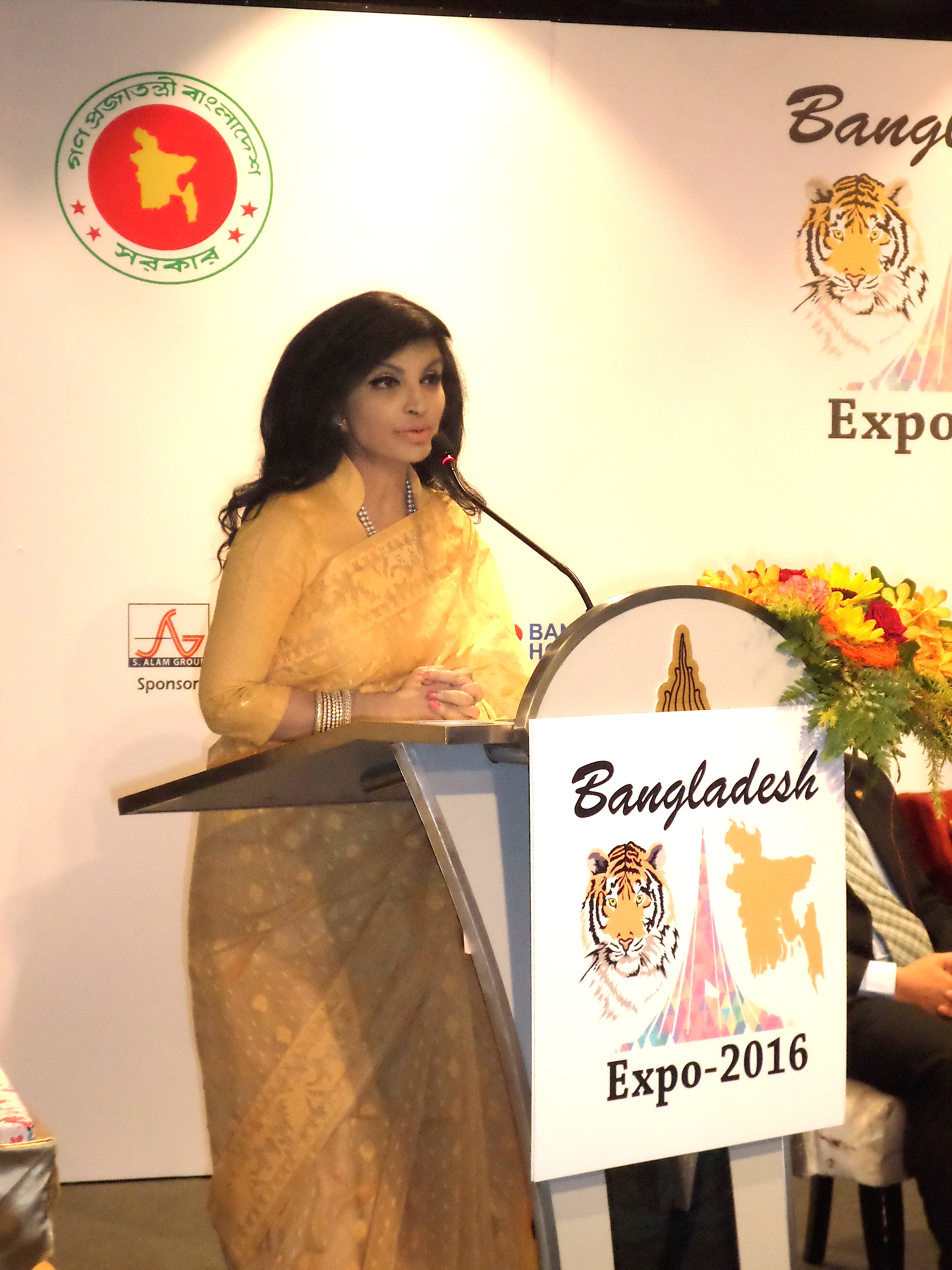 Bangladesh Ambassador to Thailand Saida Muna Tasneem |
In her remarks, Bangladeshi Ambassador to Thailand Saida Muna Tasneem called it an “epoch-making trade show” designed to help Thai businesspersons “take a fresh look” at Bangladesh and gain a better understanding of the linkages and complementarities between the two countries.
Said the Ambassador, “Thailand occupies a special place in our foreign policy priority as a close regional and ASEAN neighbour, and a fellow BIMSTEC country. The two nations are bound by ancient sea and land-bound trading routes shared in the continuum of the Bay of Bengal basin and deep-rooted linguistic, cultural and Buddhism links. Our two capitals are only two hours away by air. Our two countries foster common aspirations for a peaceful, prosperous and well- connected region. Given these geographic proximities and common aspirations we must pursue greater bilateral trade, investment, economic and connectivity ambitions.”
She added, ““Branded as Asia’s next emerging tiger, Bangladesh’s GDP at US$ 581 billion is projected to double by 2030 making it the world’s 23rd fastest growing economy based on exports and domestic market growths. We want to see some of Bangladesh’s internationally branded export products find a market in Thailand, factoring in the comparative advantages and complementarities in our domestic markets. At the same time, Thailand needs to explore higher trade volumes and investment in Bangladesh, a country rated in JETRO’s 2015 report as one of the most investment-friendly in Asia. Thai investors should also leverage Bangladesh’s DFQF (Duty-free and Quota-free) market access to Europe, Australia, Canada and Japan.”
In her message to the event, the Bangladesh Prime Minister Sheikh Hasina said, “Deepening trade, business, and physical connectivity with our regional neighbors, especially from the ASEAN, has been a key policy for realisation of my Government’s Vision 2021 – transforming Bangladesh into a digitally driven Middle Income Country by 2021.
“My Government has been relentlessly sustaining a growth trajectory with more than 6.3% growth rates. Exports and FDI have soared to an all-time high in last two decades. We are continually enhancing our Special Economic Zones (SEZs), IT and High-Tech Parks and mega-infrastructure projects including deep-sea ports and LNG terminals, are all geared towards accelerating economic relations and shared prosperity with our Bay of Bengal neighbors.”
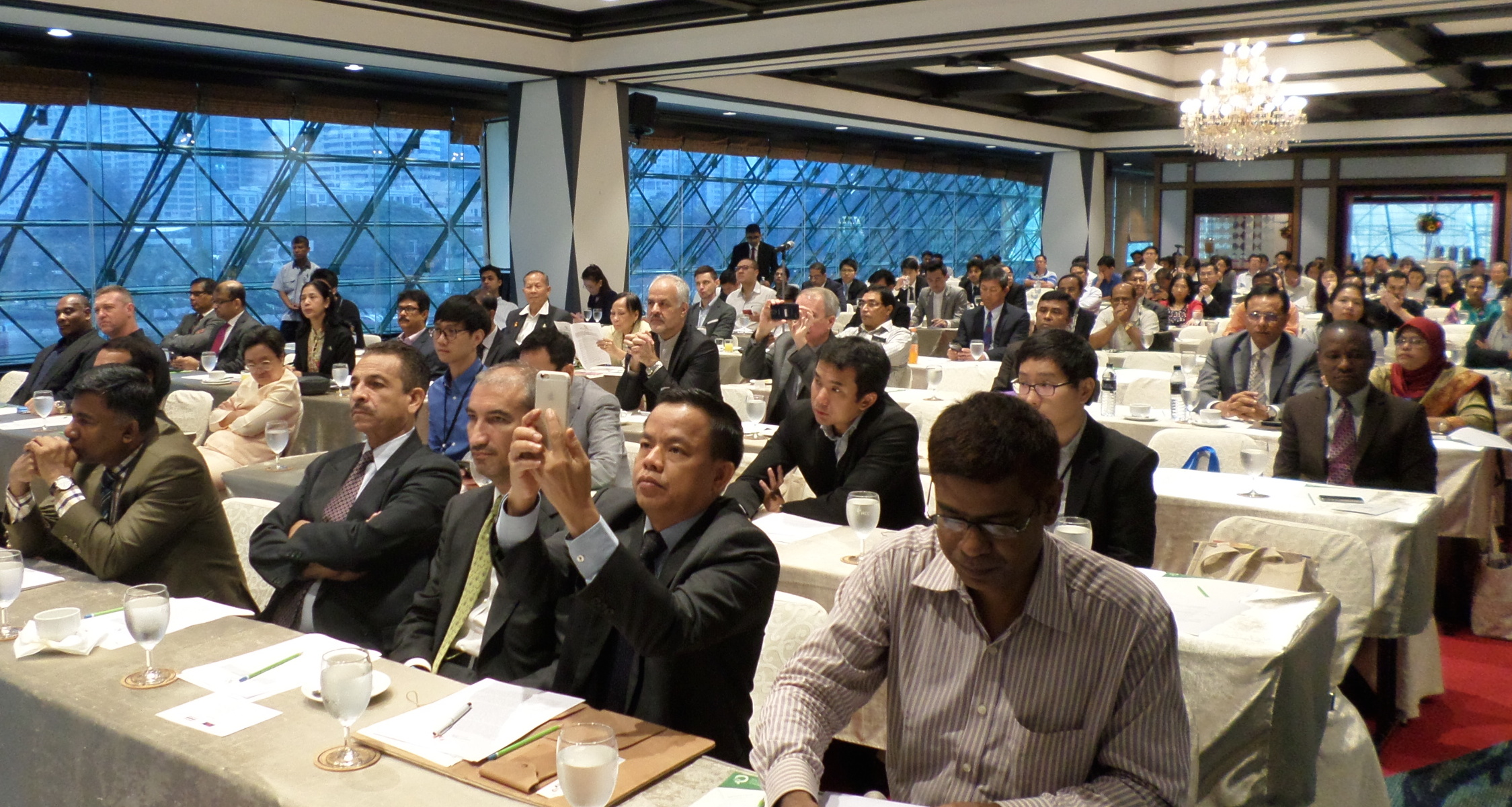 The event attracted many members of the diplomatic community. Pictured here are the Cuban Ambassador (seated with hands folded in the front row) and the Iranian Ambassador (seated two rows behind in the centre with hands clasped). |
|
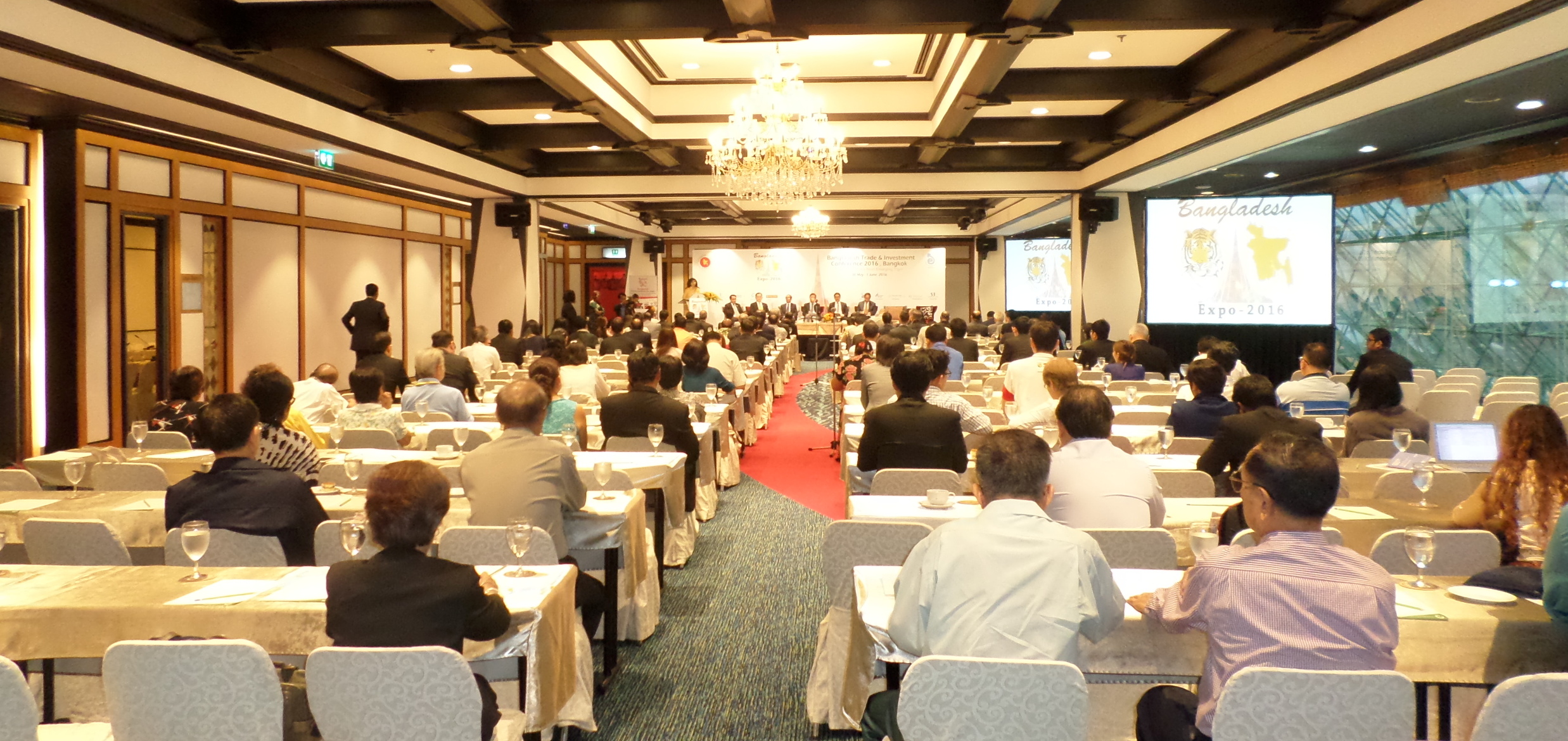 |
The extent of the awaiting opportunities became clear during the business presentation sessions and trade show.
TOURISM: Mr. Akhtaruzzaman Khan Kabir, CEO of the Bangladesh Tourism Board, outlined details of the upcoming Tourism Master Plan. To be completed in 2018, the plan will open up prospects for developing hundreds of Mega and Medium size tourism product and destination development projects such as resorts, villas, theme parks, hotels, beach sports entertainment and MICE Facilities. One emerging opportunity is the Sabrang Tourism Special Economic Zone, close to Cox’s Bazaar and the border of Myanmar. He said Sabrang was well connected by road, air, and river with Dhaka and other major cities of Bangladesh and had sufficient land for development of tourism and recreation.
BUDDHIST TRAVEL: Mr. Karunangshu Barua, Founder of Nymphea Publications, was exhibiting an impressive coffee-table book called Buddhist Heritage of Bangladesh. It featured spectacular photographs of the viharas, shrines and stupas built during what the book refers to as the Buddhist period in Bengal, which influenced the architectural style of Angkor Wat in Cambodia and Borobudur in Indonesia. Describing Bangladesh as “the birthplace of a new Buddhist theological development known as “Vajrayana,” the publication “throws light on points hitherto dark about Buddhist culture and tradition” and “brings about a detailed account of the socio-economic, geopolitical and ethico-religious conditions of the time.”
Also at the show was Sayed Ishak Miah, MD of Discoverasiatrip.com, a Bangkok-based company featuring tours to the ancient Buddhist monasteries of Bangladesh.
TEA: Mr. Kazi Inam Ahmed, Director of Kazi & Kazi Tea, narrated how his family-owned company, founded in 2000, had turned a barren piece of land into one of greenest tea plantations. The 100% organic plantation claims to be the first to be exporting Bangladeshi tea to high-end outlets such as Harrods and other supermarkets and department stores in the UK and US under the brand-name Teatulia (local name in Bangladesh, “Kazi & Kazi”). His sales team used its presence in Bangkok to survey the Thai department stores and restaurants on the prospects of making a distribution breakthrough in Thailand.
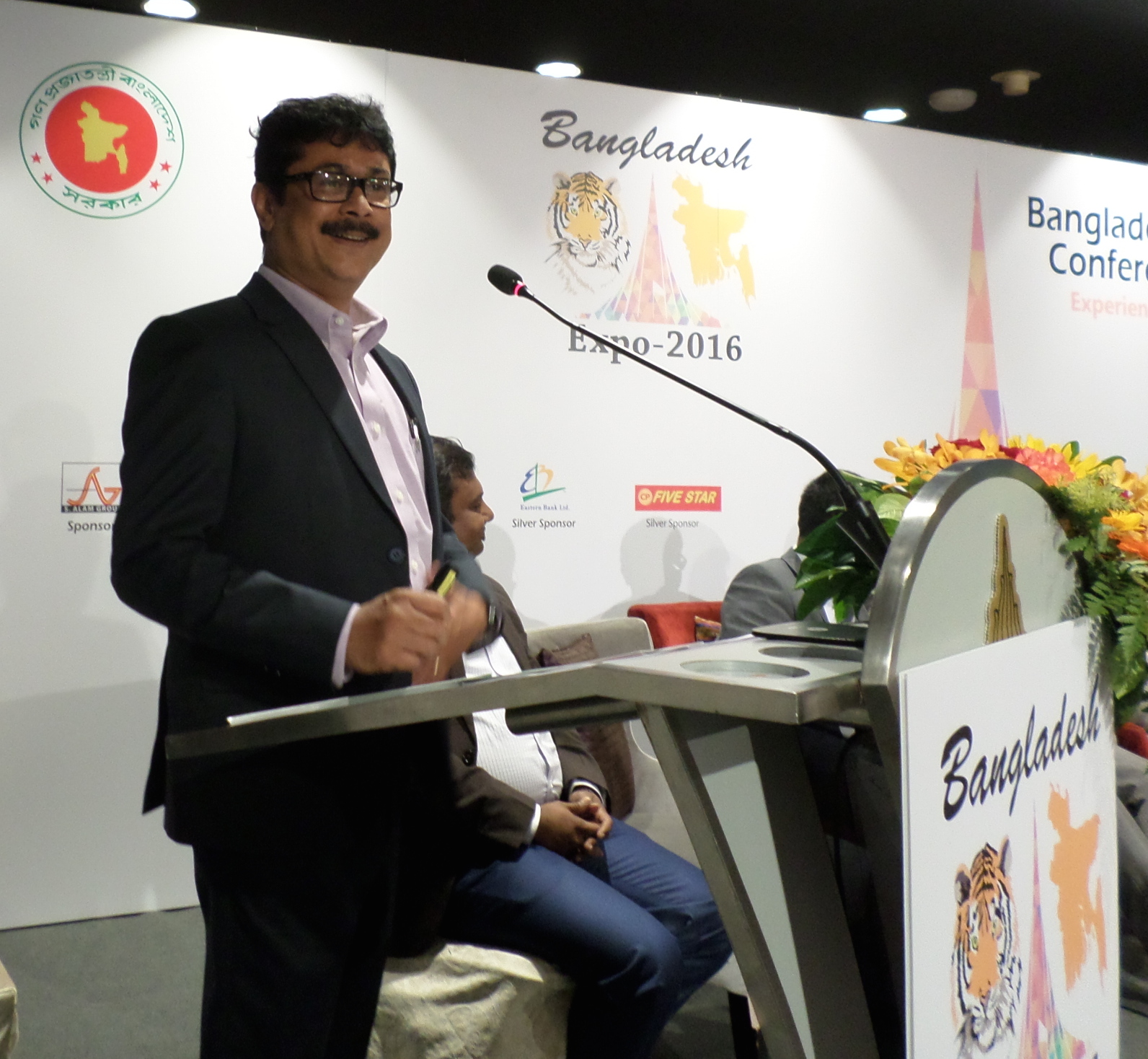 Mr. Akhtaruzzaman Khan Kabir |
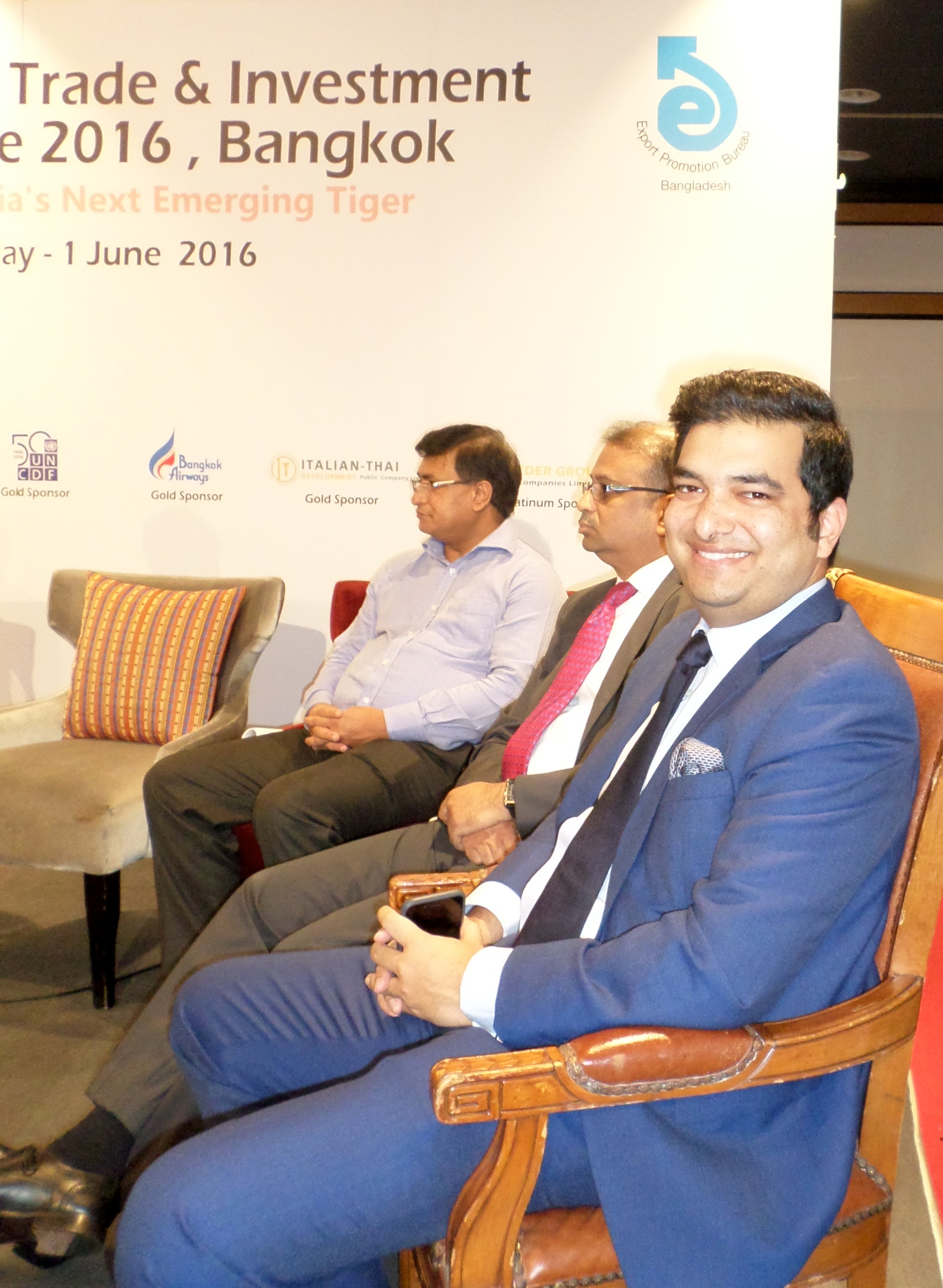 Mr. Kazi Inam Ahmed |
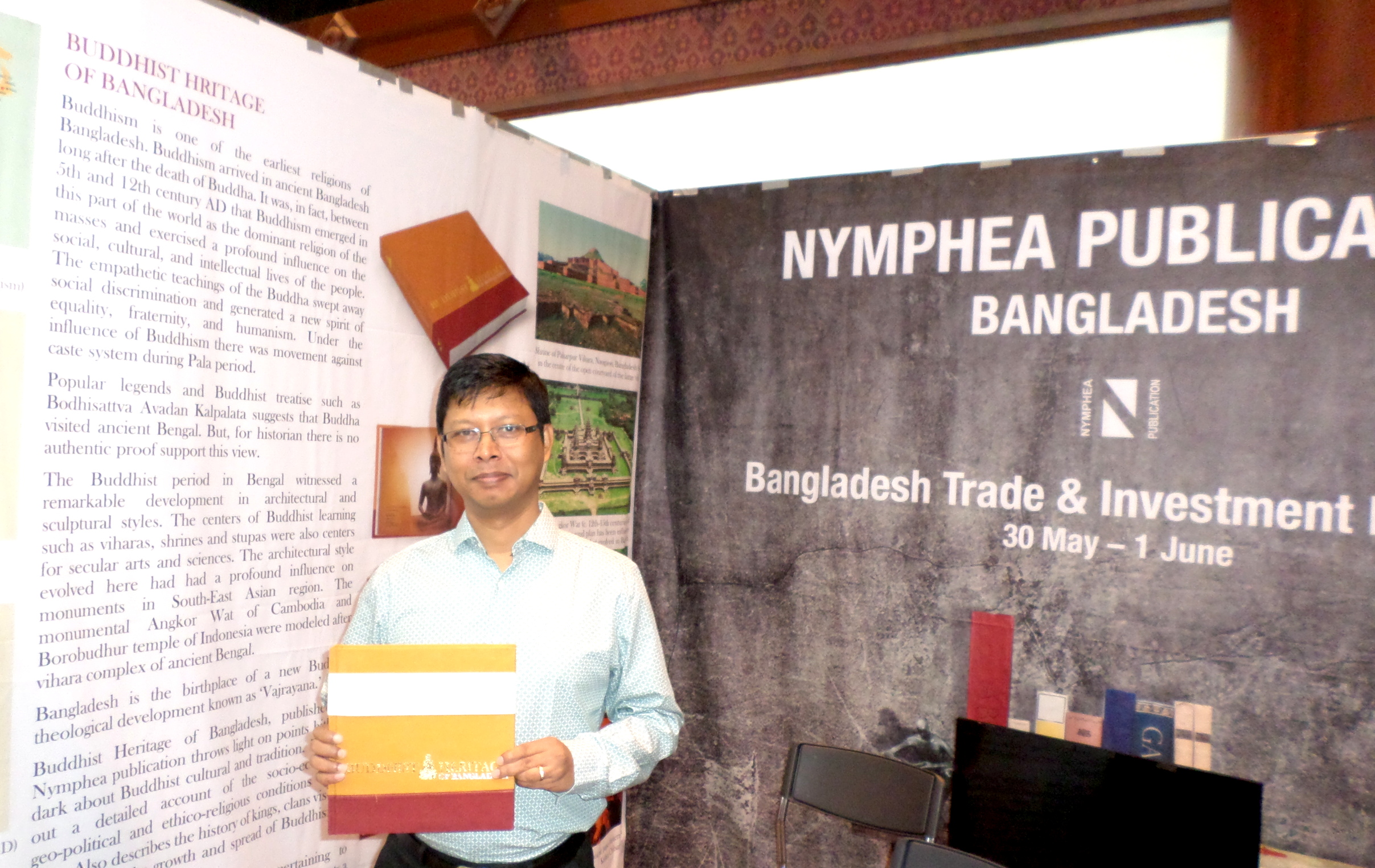 Mr. Karunangshu Barua |
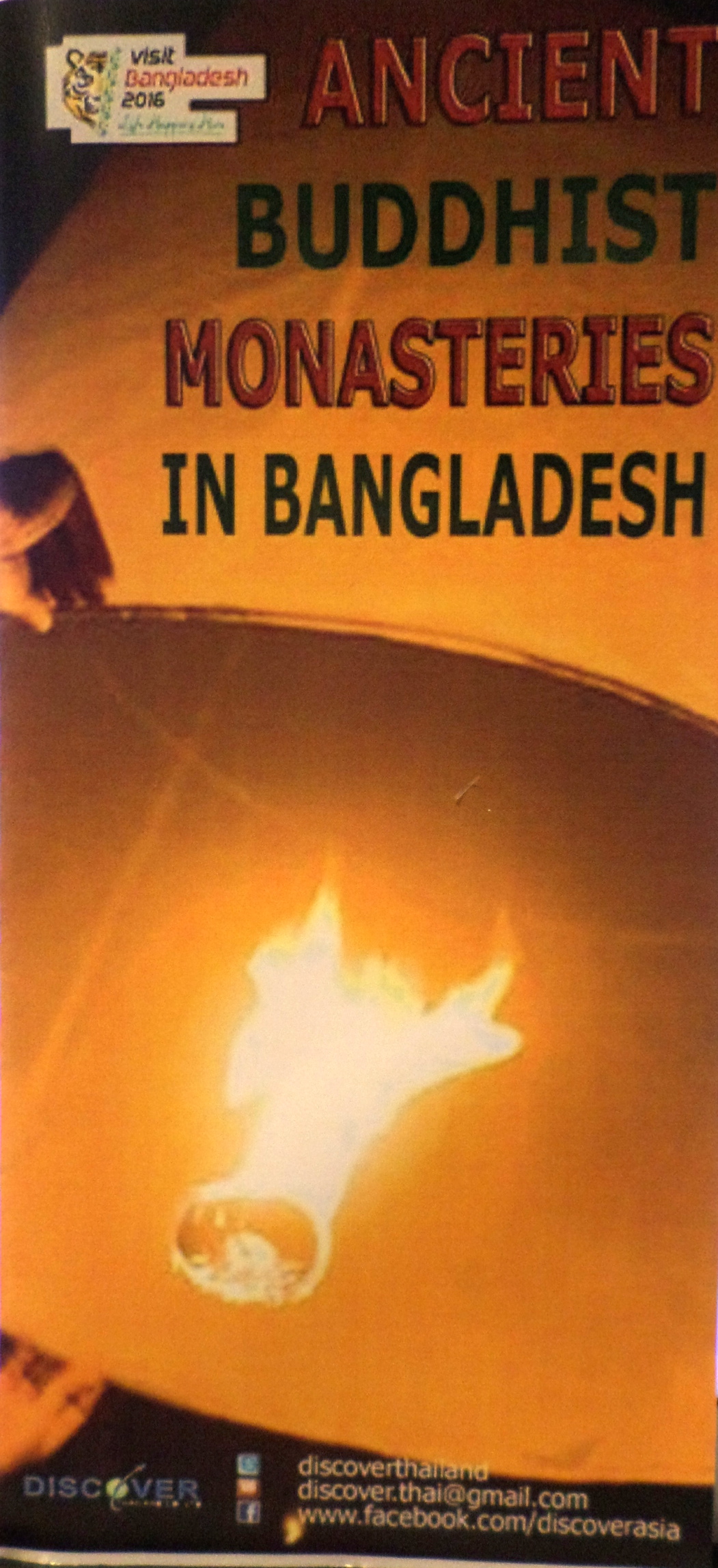 |
CERAMICS: Mr. Mohammed Humayun Kabir, CEO of Shinepukur Ceramics Ltd said Bangladesh is in perfect geographical position to produce and export ceramics tableware, tiles and sanitary wares & insulators. The art and science of making burnt clay product and terracotta has been long known to Bangladeshi potters who have the skill and experience to produce excellent clay-based pottery/traditional ceramics. The high-quality natural gas is considered the best fuel for ceramics firing, with low sulphur and little or no residue on combustion.
JUTE: Mr. Rashidul Karim Munna, MD of Creation Pvt Ltd., said the natural jute fibre is 100% bio-degradable and recyclable, and makes for excellent gift and houseware products, laundry baskets, fruit baskets, storage products and decoration items. The affordable natural fibres are second only to cotton in amount produced and variety of uses amongst vegetable fibres. It is a renewable and sustainable resource and the fabric itself is durable and extremely strong.
PHARMACEUTICALS: Mr. Abdul Muktadir, MD of Incepta Pharmaceuticals Ltd., said Bangladesh is targeting becoming a major global hub for High Quality Low Cost generic medicine and vaccines. Bangladesh Pharma industries aims to capture 10% of the global generic market. Two companies have received certification for Good Manufacturing Practises from the US FDA and five more have received similar certification from the European Union. He said this number will increase to 30 very soon. Bangladeshi pharma companies are advancing in production of biosimilars, vaccines, oncology products and medical devices, and the country has been given licenses to manufacture patented products upto 2033.
SHIPBUILDING: Mr. Saiful Islam, MD of Western Marine Shipyard Ltd., said the Bay of Bengal is a huge source of deep sea fishing. About 6,000 Thai vessels are operating in the exclusive economic zones (EEZs) of coastal states. Most of the Thai fishing vessels are now more than 20 years old and will soon need to be replaced. Bangladeshi shipyards are especially built for smaller ships and have the advantage of costs, good weather and government support. They are also open for foreign investment and joint ventures. Bangladeshi expertise in deep-sea fishing vessels has been enhanced via technology transfer from Thailand, Japan, Denmark and Iceland. Today, leading shipyards in Japan, South Korea and Europe have shifted to building bigger ships. As a result, shipyards in Bangladesh are filling the void for smaller ships such as deep-sea fishing vessels, tugs, utility vessels, etc.
ENERGY: Mr. Humayun Rashid MD of Energypac, said there is huge potential in windfarms. The same Bangladeshi coastlines that are hit by typhoons and hurricanes are also perfect for harnessing wind energy. Cox’s Bazaar could become a major source with potential for generating 3,500 mw of windpower. Bangladesh is cutting its dependence on imported fossil fuels and shifting to renewable resources. The huge sources of energy could also benefit Thailand which is moving in the same direction.
LABOUR CONDITIONS: Mrs Rubana Huq, Managing Director, Mohammadi Group said that Bangladesh had learnt the lessons of its recent industrial and building accidents and was working across the board to improve safety and professional standards. Now, she said, factories have unions and better social and welfare conditions which have also contributed to raising exports. She urged Thai businessmen to source their fashion items in Bangladesh. “All countries started with T-shirts,” she said, “We can now do more than that. The race to the top has begun.”
At a higher level, she said it was time for Asia to become more self-reliant and stop its “enslavement by the West”. She quoted from one of British author George Orwell’s essays as a motivational example of how intra-Asian trade can help the cause: “We all live by robbing Asiatic coolies, and those of us who are ‘enlightened’ all maintain that those coolies ought to be set free; but our standard of living, and hence our ‘enlightenment, demands that the robbery shall continue.”
VISA ISSUES – One impediment to bilateral travel is visa issuance. Low-cost airlines may be offering low-cost fares, but there is no such thing as a low-cost visa. From Thailand to Bangladesh, Thai passport holders are charged US$33 for a single-entry tourist visa, while double-entry visa costs more than double (US$72). For Business visas, a Single entry starts at US$ 66, a double entry visa is US$72 and Multiple-entry visas cost US$165. The website of the Bangladesh embassy in Bangkok does not list the period for which the multiple entry visas are valid. There is no facility for online applications.
From Thailand to Bangladesh, the visa processing has been outsourced to VFS Global. Online applications are possible. The website does not list the visa fees but as they are usually reciprocal, they would be roughly the same as those charged by the Bangladeshi embassy in Bangkok. However, one representative of Bangkok Hospital, one of the Expo’s sponsors and a major beneficiary of the booming Bangladeshi medical tourism market to Thailand, said applicants are facing stringent checks due to recent security issues in Bangladesh. He said visas often take up to 10 days to be cleared and are often not given until the last minute.
Ambassador Tasneem said her embassy expedites Thai visa applicants as soon as possible. She said businessmen on both sides are pressing for the creation of an APEC-style card under the aegis of the BIMSTEC economic grouping.
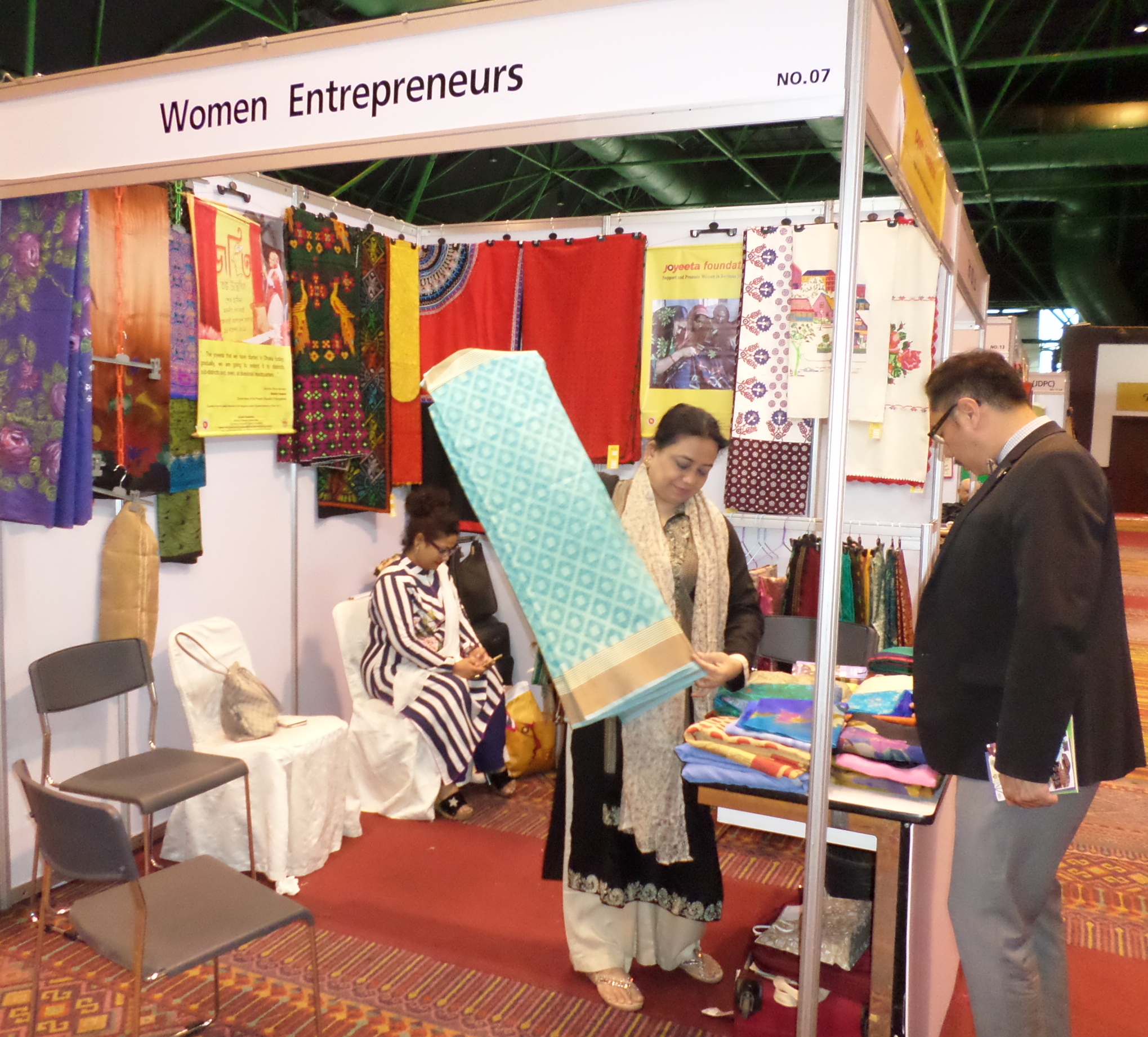 |
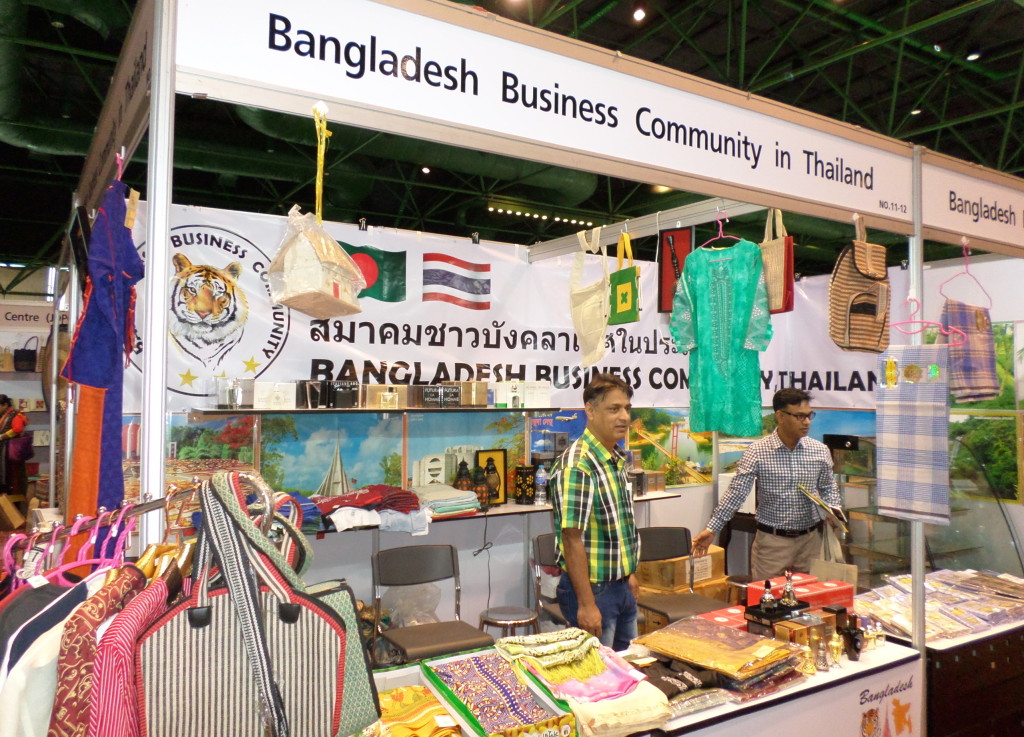 |
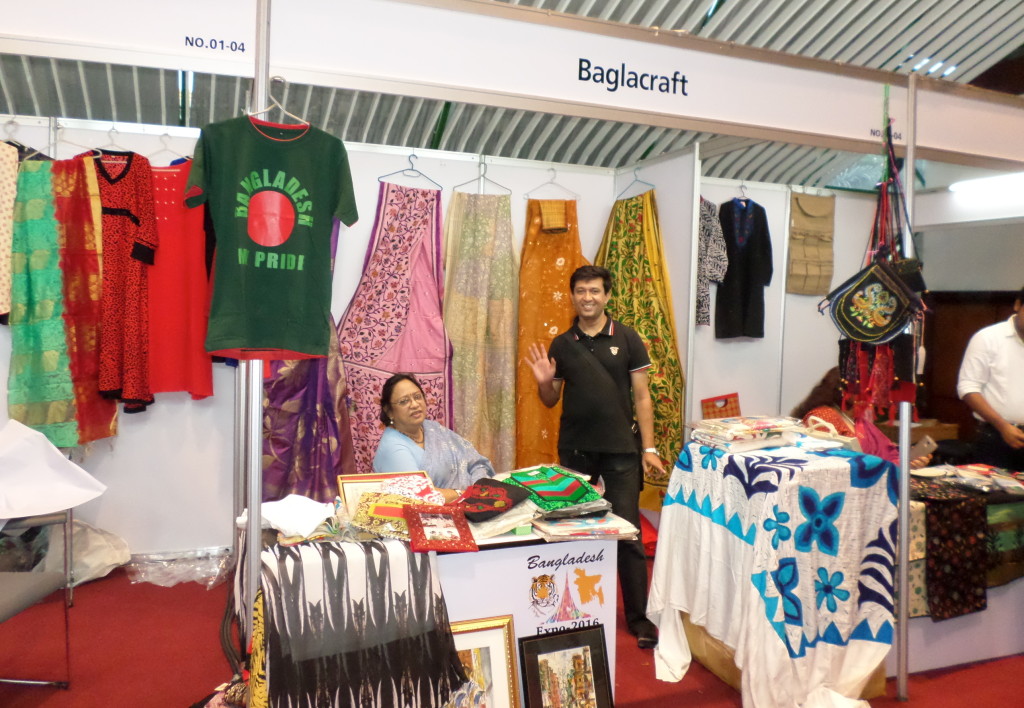 |
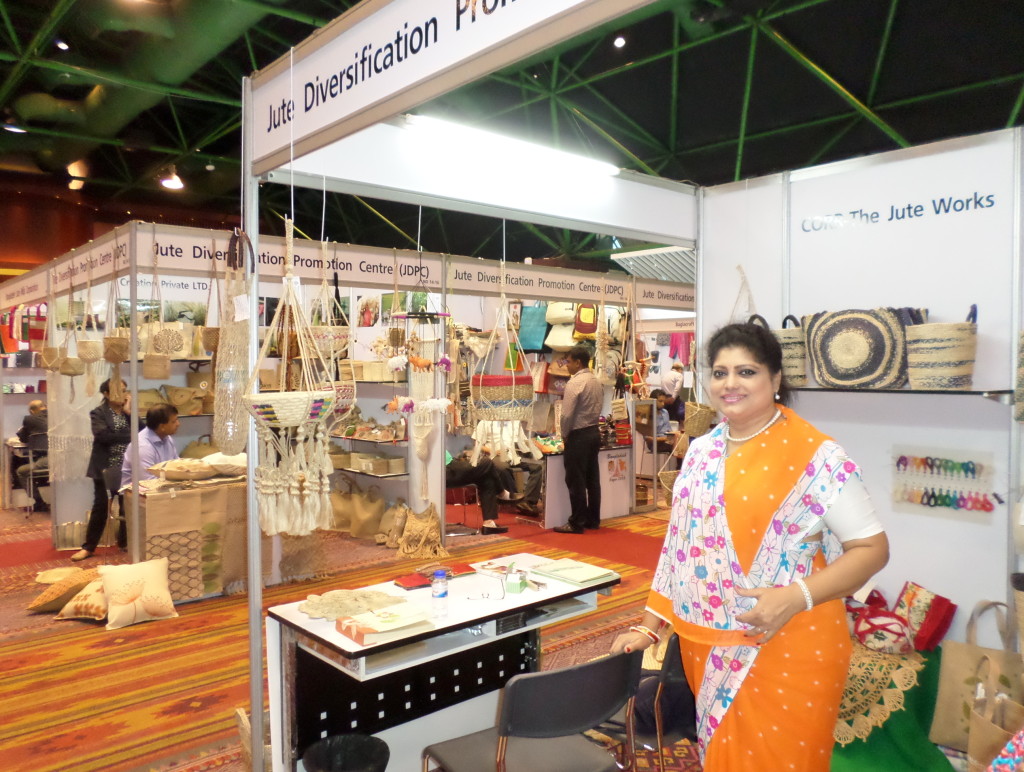 |
Bangladesh is now pushing for cuts in Thai import tariffs on its products. The Joint Trade Committee (JTC) headed by the two Commerce Ministers held its last meeting in Bangkok in May 2013. Bangladesh provided a list of 25 products for granting Duty-free Quota-free access to Thailand. Under the WTO Bali Ministerial decision, Thailand granted DFQF access to 10 of the 25 products. Bangladesh has requested access to all main exportable items including jute bags, readymade garments and pharmaceutical products. The Thais have promised to review the list at the next meeting in 2017.
Ambassador Tasneem was widely praised for the organisation of the Expo. Mrs Mafruha Sultana, Vice Chairperson of the Bangladesh Export Promotion Bureau, said the entire event had been “designed and choreographed” by the Ambassador. Other senior members of the Bangladeshi delegation, including Commerce Minister Tofail Ahmed also praised the work done by the Ambassador.
In wrapping up the session, Ambassador Tasneem noted that it had not been easy to organise. Beyond the usual administrative and operational issues, she said, Bangladesh had to overcome cultural and perception challenges. Bangladesh is still seen in Thailand as a “poor, Muslim, conservative country. Of course, we are all of that, but we are also secular and rapidly emerging from poverty,” she said.
She said the event was too expensive to be held on annually in Thailand but could be rolled out in other ASEAN countries. She urged her own Foreign Ministry officials to listen more to the business sector and become better informed about its requirements for expanding Bangladeshi trade and investment. At the same time, she called on the Bangladeshi business groups and associations to stop fighting each other and back the efforts of Bangladeshi diplomats to expand markets for them.
Although the Ambassador said she wanted the focus to be on both trade and tourism, the event was too heavily weighted in favour of trade. The Bangladeshi travel trade needs to do more promotions in Thailand, establish a stronger marketing presence and work with the Thai travel trade, the Bangladeshi embassy, Chamber of Commerce and airlines to design special packages that can appeal to the growing number of elite Thai travellers looking for unexplored destinations. Moving the products by cutting tariffs may be relatively easy. Moving people has to be equally important.
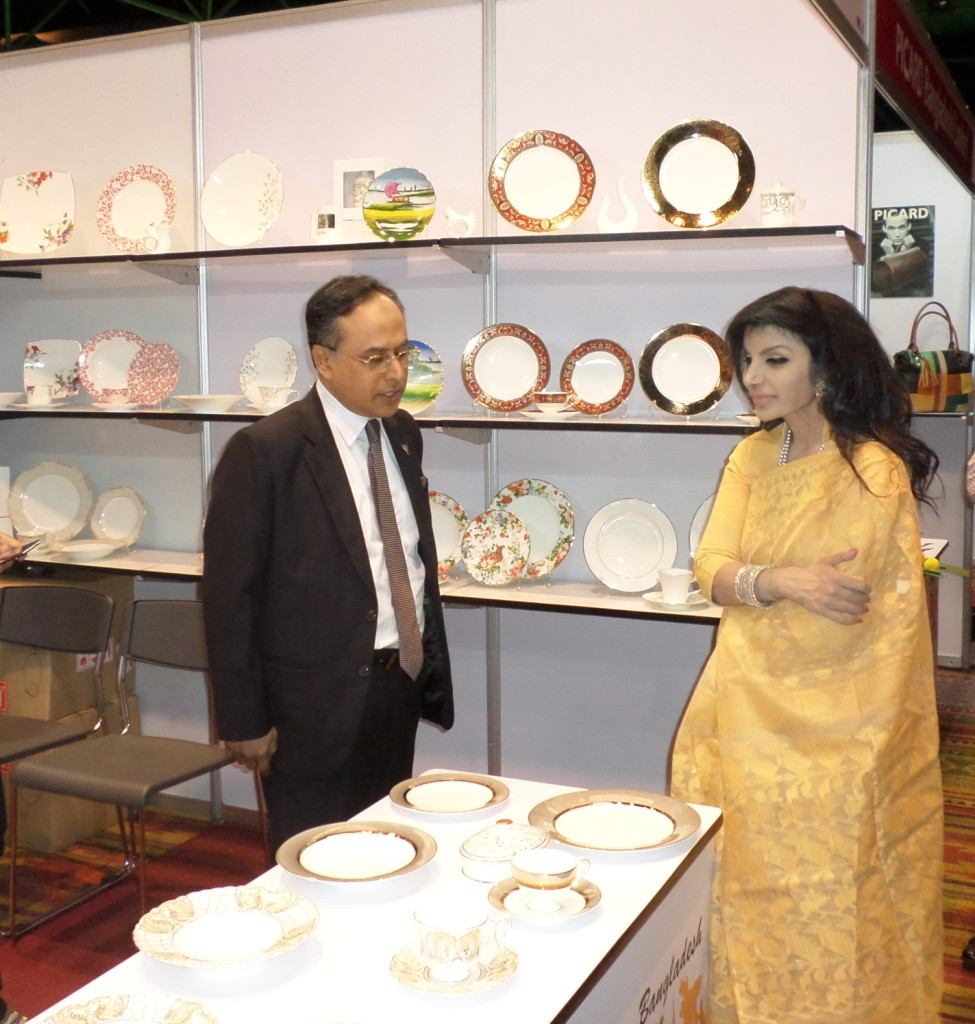 Ambassador Tasneem making the rounds of the trade show. |
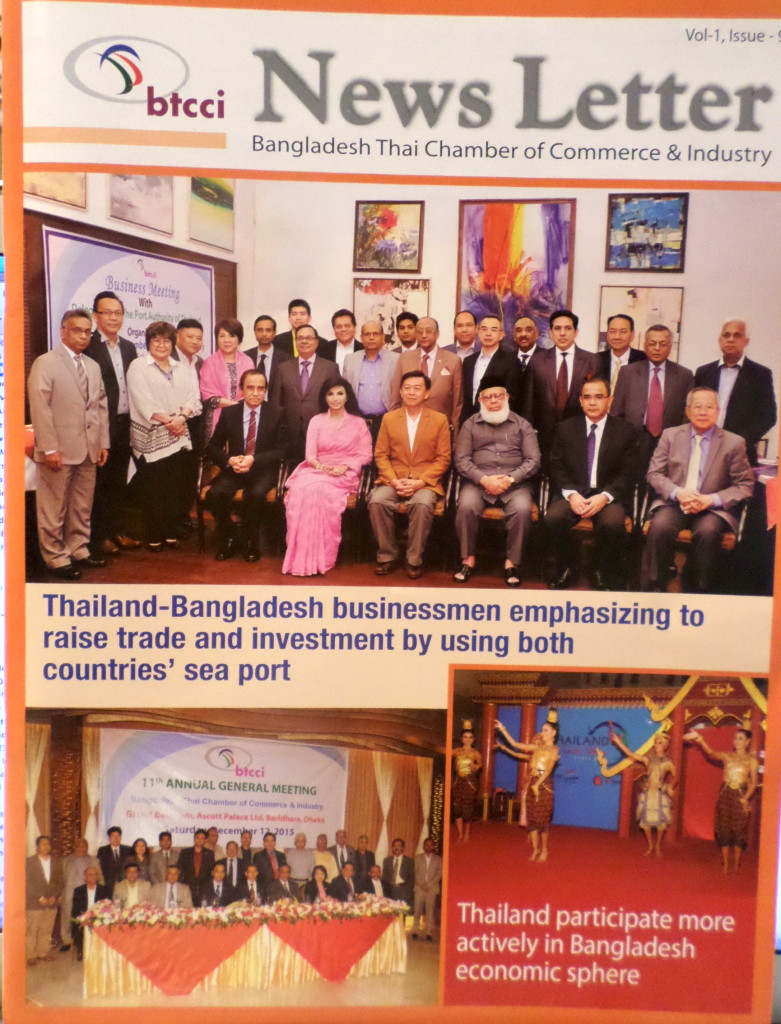 |
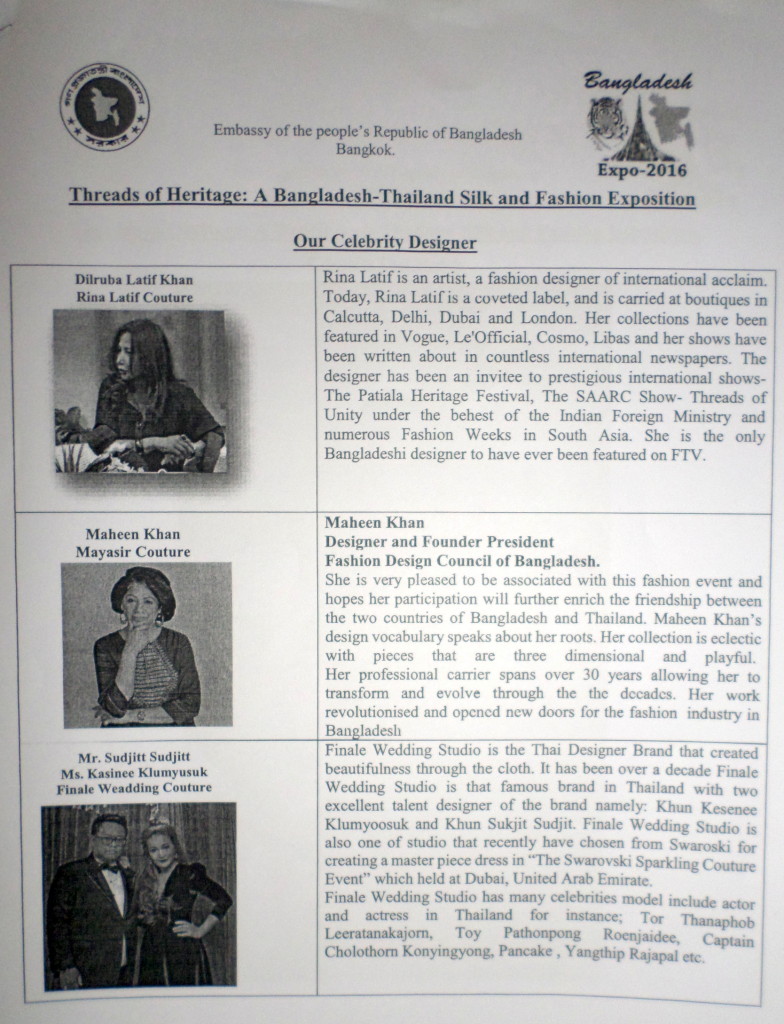 The Bangladeshi fashion designers who participated in the event. |

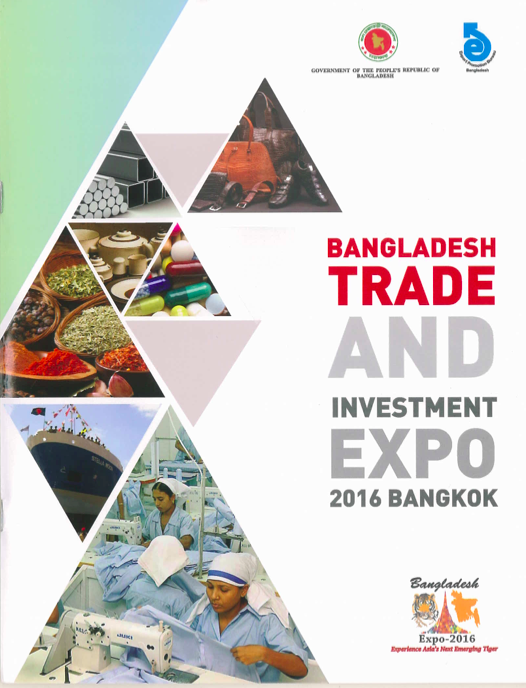
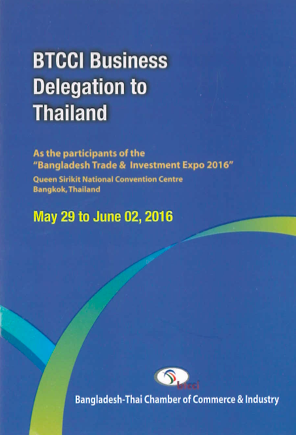


Liked this article? Share it!